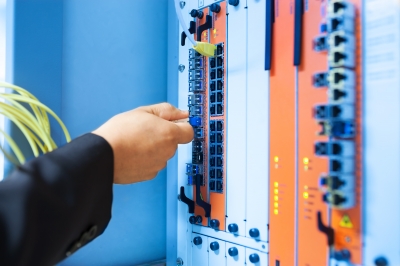 The Philippine Bureau of Customs (BOC) clarified that the recent two-day downtime of its electronic-to-mobile (E2M) system was caused by a technical malfunction and not connected to the implementation of the “switch on” mode of submission of the electronic air manifest.
The Philippine Bureau of Customs (BOC) clarified that the recent two-day downtime of its electronic-to-mobile (E2M) system was caused by a technical malfunction and not connected to the implementation of the “switch on” mode of submission of the electronic air manifest.
BOC deputy commissioner for Management Information System and Technology Group (MISTG) Gerardo Gambala, in a statement, said the E2M downtime from 8:00 a.m. of June 17 to 8:30 p.m. of June 18 “was caused by a technical malfunction of the Government Network (GovNet) which is being used by BOC to connect to its Cloud Servers.”
“This line is being operated and maintained by DICT (Department of Information and Communications Technology), thus BOC IT personnel had to wait for the issue to be resolved,” Gambala explained. “Although the E2M System and Servers were operational, the loss of network connectivity meant that no BOC transactions could be submitted to the system.”
“While the downtime occurred during the implementation of the air manifest, the events were totally unrelated,” he added.
BOC on June 17 switched on the electronic mode of submission of the air manifest, pursuant to Customs Memorandum Order (CMO) No. 102015. The CMO requires airlines and freight forwarders to electronically submit their airfreight manifests through value-added service providers. The order also means penalties are now imposed on late submissions of air manifests.
However, since the order’s implementation, there have been numerous reports of queuing by stakeholders in order to lodge the e-air manifest, particularly at Ninoy Aquino International Airport (NAIA).
In a letter to the BOC on June 21, the Chamber of Customs Brokers, Inc. (CCBI) requested the agency to defer the strict implementation of the “switch on” mode, noting subsequent delays in customs clearance and high storage charges.
Read: PH customs brokers seek deferment of e-submission of air manifest
CCBI president Atty. Ferdinand Nague said implementation should be deferred “until such time all transmission glitches and other internal issues and concerns of airlines and forwarders” are resolved. The deferment would also “temporarily ease the traffic and delays” currently being experienced with customs clearance at NAIA, he added.
MISTG’s Gambala said the downtime did cause delays in air manifest submission, “but this was not the main cause of customs clearance delays because all air-manifest affected by the downtime were being acted upon and directly validated.”
“The real issue is the availability of electronic air-manifest which, if not submitted, will lead to the rejection of customs lodgement or errors in the processing of existing entries,” he said.
“It should be noted that the initial activation of air manifest was in December 2015. As part of the preparation to the manifest switch-on, public consultations and information dissemination have been conducted to address the issues,” he pointed out.
“We acknowledge that some BOC stakeholders will be affected by the manifest switch-on. However, we note that majority of BOC stakeholders have complied with the manifest switch-on and have submitted electronic manifest. The long delay in the air-manifest implementation should have been enough time for all stakeholders to comply,” Gambala said.
He stressed that electronic air manifest submission is a mandatory requirement for customs administrations worldwide, including the Philippines.
“We know that in all system implementation, there will be issues and inconveniences that will be encountered. However, policy calls for the implementation of air-manifest so we urge the public to comply,” Gambala said.
For assistance, he said, stakeholders can contact the bureau’s helpdesk, BOC Cares, at 705-6000, or email boc.cares@customs.gov.ph and airmanifest@customs.gov.ph. – Roumina Pablo
Image courtesy of cookie_cutter at FreeDigitalPhotos.net





